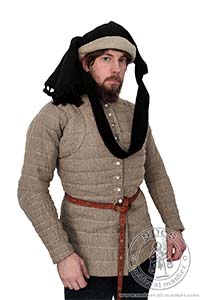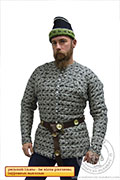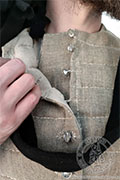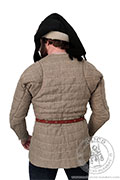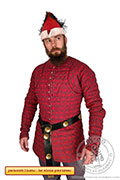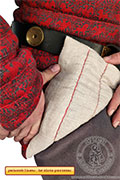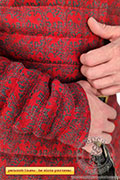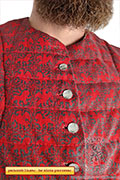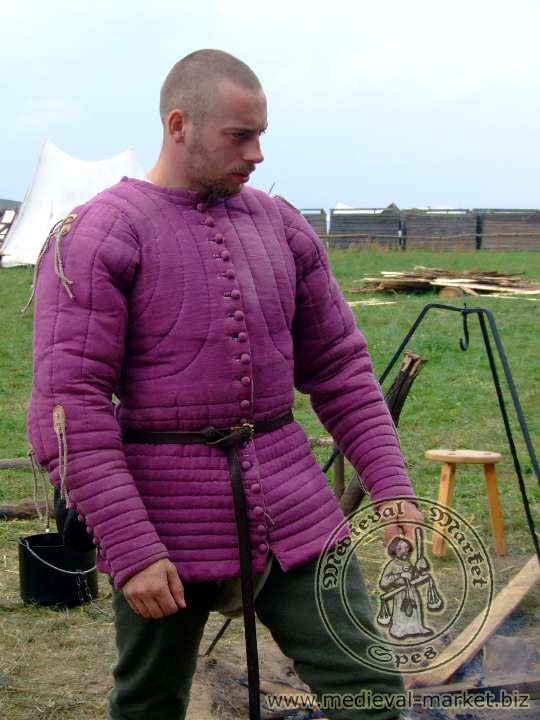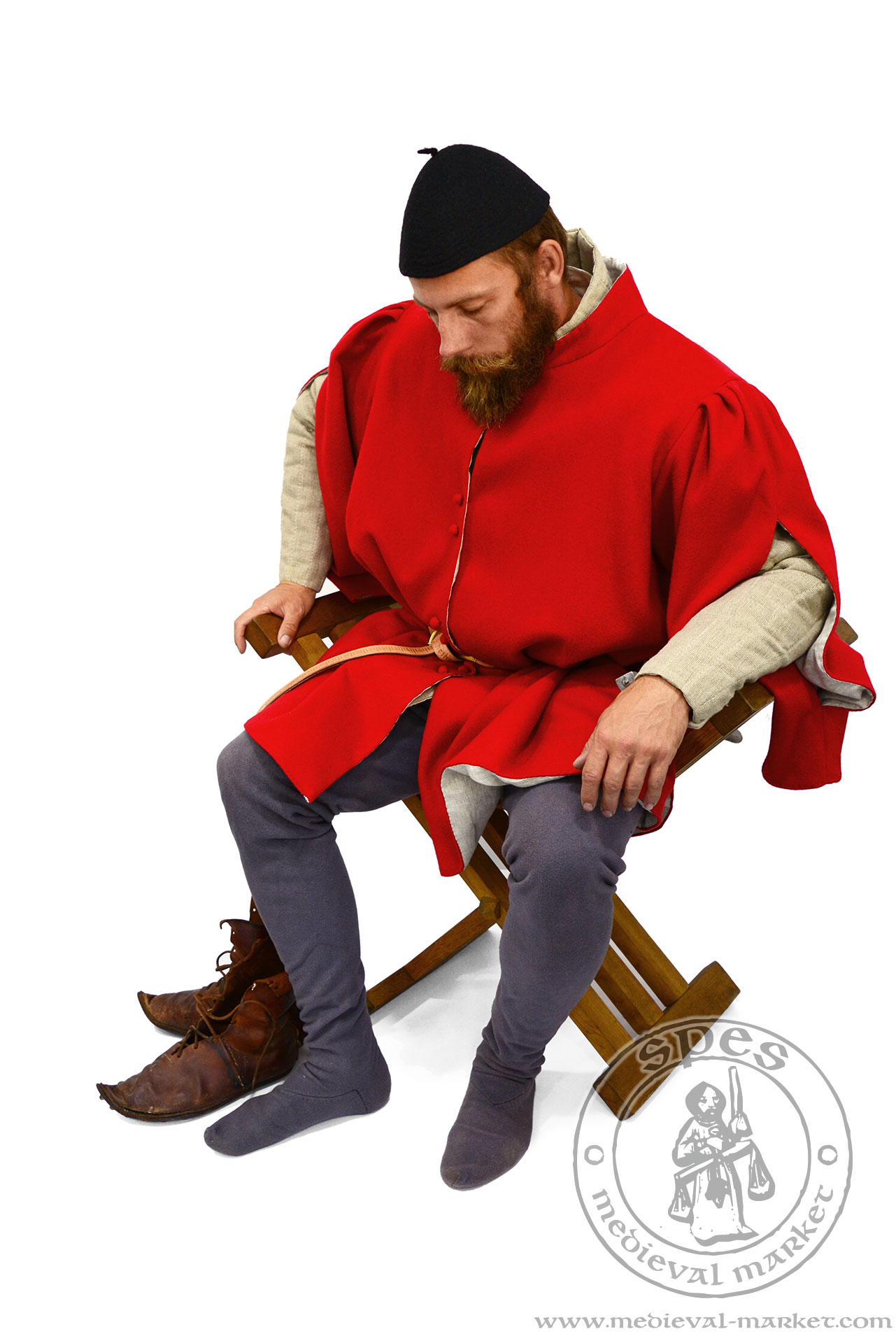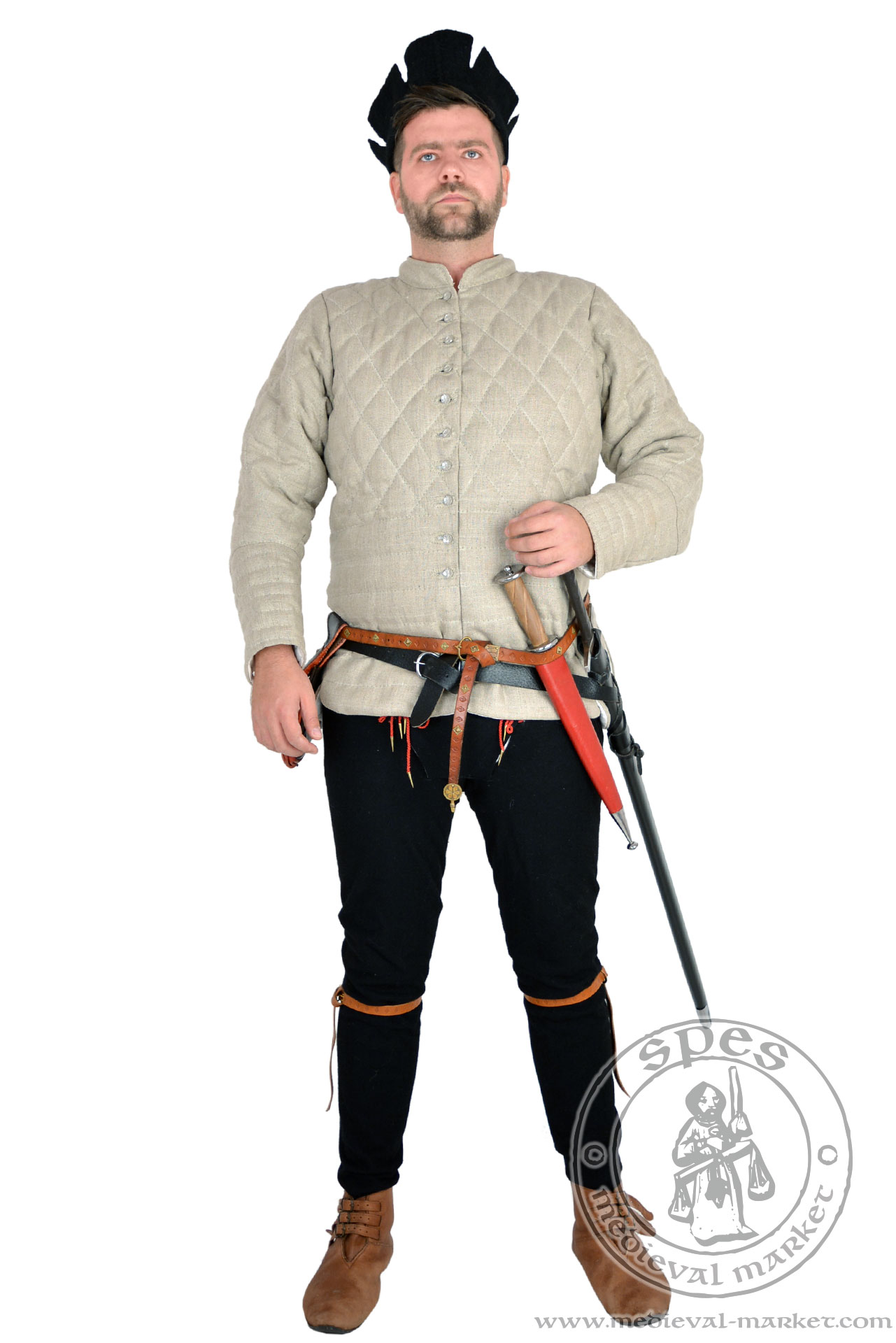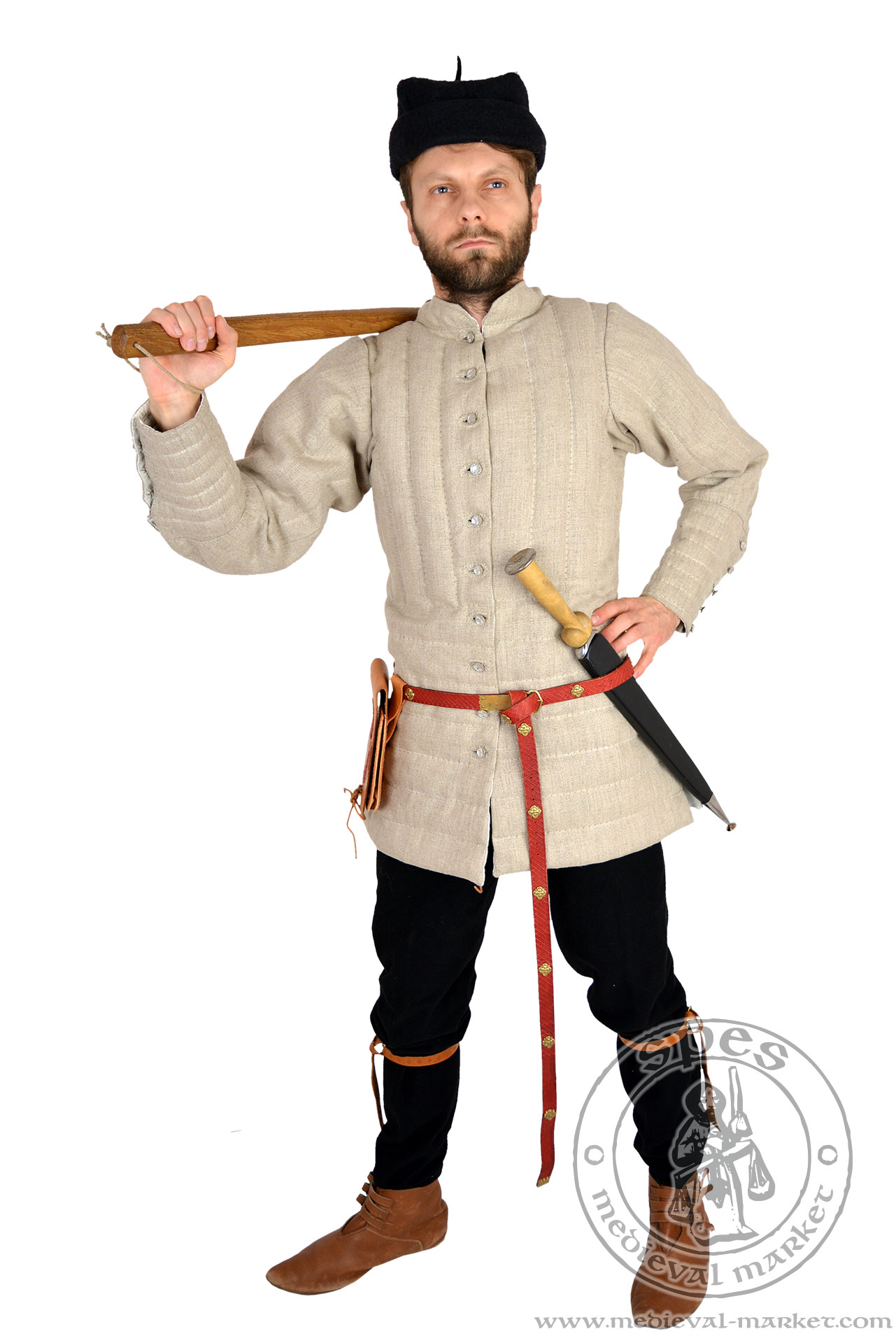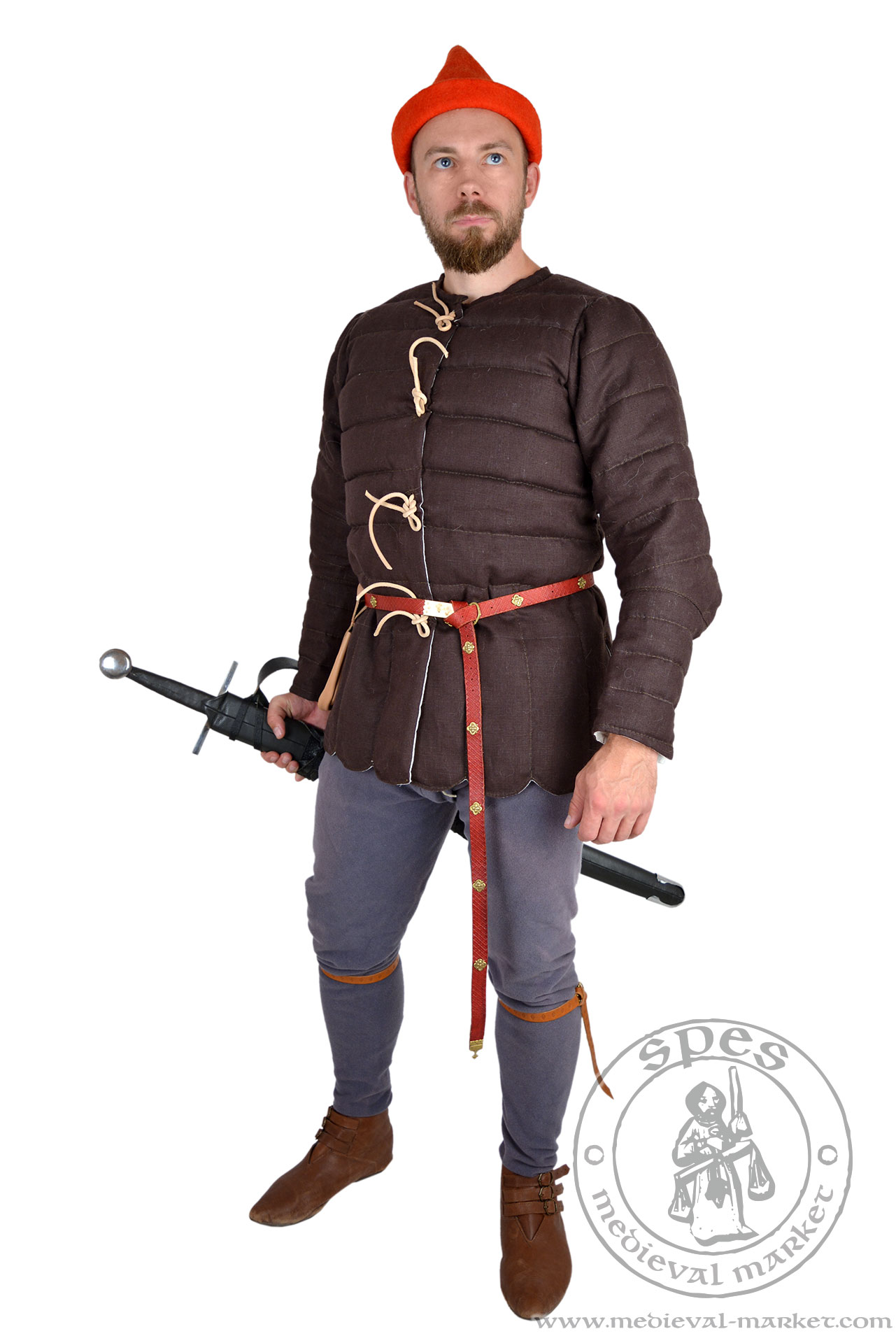If you wish to adjust your cookie preferences for this website, you can do so using your browser settings.



Category: Male clothing > arming garments
Pourpoint of Charles de Blois
Pourpoint of Charles de Blois
Century: XIV, XV| CODE | Material |
Standard
|
Price | |
| PMLR0474 | Linen | Hand-made | 490.00 EUR |
|
| PMLS0473 | Linen | Mixed | 249.00 EUR |
|
* Please write the extra wishes in the place 'additional information' at the end of the order.
Lowest price in the last 30 days
See how to place an order for several people
A type of padded jack based on a pourpoint of Charles de Blois, who died in 1364.
A characteristic features of this gambeson (also called a wambais) are very deep cuts on sleeves and cut off at the waist (2 parts). To increase the comfort of use, sleeves are composed of few elements. In standard, our porupoint is buttoned up with tin buttons. However, we can replace them with fabric buttons, or other from our assortment. In this period of the Middle Ages a collar was an uncommon part of clothing. Still, we can sew it to the aketon for additional 10 EUR.
You can choose a color of both outer linen layer of fabric, and inner linen lining of a gambeson. For additional payment (10% of a price), we can make a bicolor pourpoint on the outside.
Thickness of our pourpoint:
Average; 1 layer of filling on torso, 1 layer on arms(with reinforcement on elbows and shoulders).
Charles de Blois' gambeson — the history and purpose
Original pourpoint is kept in Musee Historique des Tissus in Lyon. The aketon of Charles do Blois had an outer layer of silk in characteristic, octagonal pattern of lion and eagle. The sleeves of pourpoint were sewn in "grandes assiettes" method, very popular in 2nd half of 14th century. It was used not only in gambesons, but also in civil garments like houppelande or cottehardie.
In the Middle Ages, gambesons were used as cheap armor for fighters. However, only the poorest used them as the only protection. For the rest, aketons were the supplement of armament, ensuring the amortization against hits and protection against brushing of an armor. Among quilted elements of medieval protection, we can find pourpoints and padded jacks for the body, quilted legs, quilted bonets, or quilted gloves. They were made of from few to several dozens of fabric layers. In 13th century this arming clothing was long and rather not fitted to the body. They were put on through head and buttoned up under the neck. Later, with the development of other parts of arming clothing,wambaises became shorter and more fitted to the wearer's body. In 14th and 15th century, pourpoints were mostly buttoned up or tied up in the front.
Gambesons were a cheap protection for the fighting men in the Middle Ages, but only the poorest ones used only them as their single armour. For others they were a part of a complete protective armament, providing amortization of the hit and the protection of attritions from the armour. Among padded protective elements we can find: gambesons protecting the trunk and hands, padded gloves, padded coifs and separate hoses. They were sewn from layers of a fabric. In the 13th century gambesons were long and rather badly-fitted to the figure. They were usually put over the head and buttoned only near the neck. Later, with the development of other elements of the armour, gambesons were shorter and better fitted to the body. In the 14th and the 15th centuries they were usually buttoned at the front or laced up.
Gambeson stuffing/layering
Normally we use:
- linen first layer
- second strengthening layer (cotton)
- few layers of batting(for specific numbers, see description of the chosen quilted garment)
- linen lining
In all arming garments (quilted hood etc.), you can change the padding. Click on this picture to see different options of padding available in our shop:

If you decide to change the padding, please write the code of chosen padding (Y1-Y13) in the "additional information" box in one of the next steps of ordering.





 Female Clothing
Female Clothing
 Accessories
Accessories Furniture
Furniture Tents
Tents Armament
Armament HMB Line
HMB Line Miscellaneous
Miscellaneous Rent
Rent In stock
In stock Special Offers
Special Offers Search
Search Your Account
Your Account About us
About us Sizing
Sizing How to buy
How to buy Blog
Blog Links
Links Events
Events
